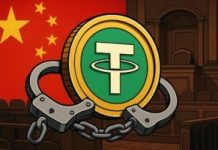The arrival of USDC on XRP Ledger marks a crucial step in the evolution of stablecoins, expanding access to a fundamental financial asset for the integration between traditional and crypto markets.
This innovation allows investors to use XRP as a bridge currency to move USDC between decentralized exchanges (DEX) through an auto-bridging function.
USDC on XRP Ledger: what changes for investors
The launch of USDC on the blockchain of XRP Ledger expands the exchange and liquidity possibilities for users.
Thanks to the layer-1 platform, the stablecoin, pegged to the dollar and over-collateralized, can now be transferred between different decentralized financial platforms more quickly and efficiently.
Markus Infanger, senior vice president of RippleX, emphasized the importance of stablecoins as “key entry points that connect traditional financial markets with the crypto space, essential for use cases based on utility rather than speculation.”
Using XRP as a bridge currency facilitates the movement of USDC between DEX without the need to continuously convert into traditional currencies or stablecoin from other networks. This reduces transaction times and costs, increasing the efficiency of cross-chain trading.
This automatic bridging system enhances the user experience and promotes higher trading volumes.
USDC is a stablecoin backed by collateral exceeding the value of the tokens issued, typically consisting of short-term U.S. treasury bills.
These public debt instruments generate returns that help support the profitability of the issuance of USDC, continuously monitored to maintain parity with the American dollar.
- Overcollateralization: more assets guarantee the circulation of digital units, minimizing the risk of default.
- Buoni del Tesoro USA: debt securities with short maturities and low risk, the base of the collateral of USDC.
- Rendimento: interest derived from securities that represents a profit margin for the issuers.
This model reassures investors about the stability of the value of USDC compared to more volatile cryptocurrencies, making the stablecoin a reliable financial asset for daily operations and investments.
Regulation and USA strategies on stablecoin
The support for USDC on XRPL occurs in a context of regulatory push in the United States, where the stablecoin sector exceeds 237 billion dollars in market capitalization.
The government intends to establish comprehensive regulations to manage this new asset class, given the profound macroeconomic and geopolitical implications.
Many American legislators consider stablecoins a strategic weapon against the decreasing global demand for US debt, a phenomenon known as “de-dollarization”.
Foreign countries are reducing the purchase of American government bonds due to concerns about the solidity of state credit and the decline in the value of the dollar.
This dynamic increases bond yields to compensate for the greater perceived risk, and consequently the servicing costs of the national debt, which amounts to 36 trillion dollars.
The result is a vicious circle of debt monetization: the increase in interest rates raises the debt burden itself, pushing the government to issue new money to cope with it, with potential inflationary effects.
During the White House Crypto Summit on March 7, the US Treasury Secretary, Scott Bessent, promised a concrete commitment to the development of stablecoins.
The objective is to protect the hegemony of the American dollar, leveraging the growing demand for stablecoins to increase the global demand for the US currency and thus support its fundamental role in the international monetary system.
There is no shortage of critical voices regarding this strategy. The supporter of Bitcoin and digital assets, Max Keiser, describes the use of stablecoins to “restore the health of the dollar” as an attempt destined to delay but not to prevent the collapse of the American currency.
According to Keiser, gold-collateralized stablecoins will offer a more solid alternative compared to those pegged to the dollar.
Gold has a high stock-to-flow ratio, an indicator that measures the relative scarcity of a resource: it protects value from inflation and rapid devaluation, a characteristic that makes it a more resilient collateral over time.
Future prospects of gold-collateralized stablecoins
Establishing gold-based stablecoins could change the rules of the game, offering investors a more stable product and less vulnerable to expansive monetary policies.
The competition between stablecoins linked to fiat currencies and those “backed” by precious commodities like gold is expected to be intense and could redefine the digital financial landscape.
The arrival of USDC on XRPL opens new opportunities for crypto investors who are looking for reliable and interoperable tools.
The automatic bridging functionality of XRP enhances liquidity and the ease of exchange across different platforms, facilitating the adoption and daily use of stablecoins in an increasingly integrated manner.
However, the emerging regulation remains a crucial point. Clear and shared legislation can establish the rules of the game, reducing legal risks and increasing public trust.
The future growth of the sector and the ability of stablecoins to establish themselves as true pillars of the digital economy will depend on this.
The debut of USDC on XRP Ledger represents an essential piece in the mosaic of digital payments and in the transformation of the global financial system.
With a careful eye on the balance between innovation and regulation, this progress could support the position of the global dollar and offer users more efficient and secure tools.
The invitation to investors is to closely monitor this development and evaluate new strategies that integrate reliable stablecoins like USDC.
In particular, also exploring the prospects offered by collateralized assets on commodities, to successfully navigate a rapidly evolving and increasingly complex market.







